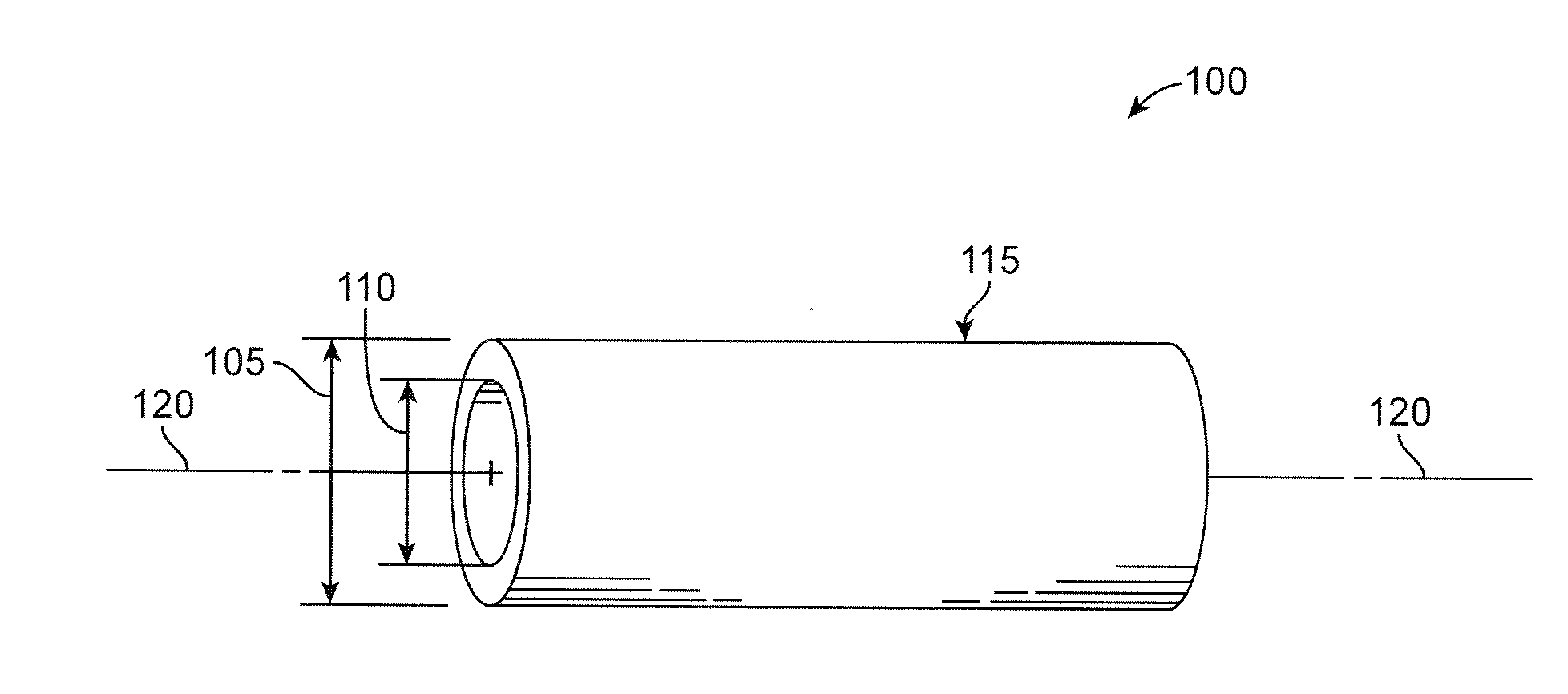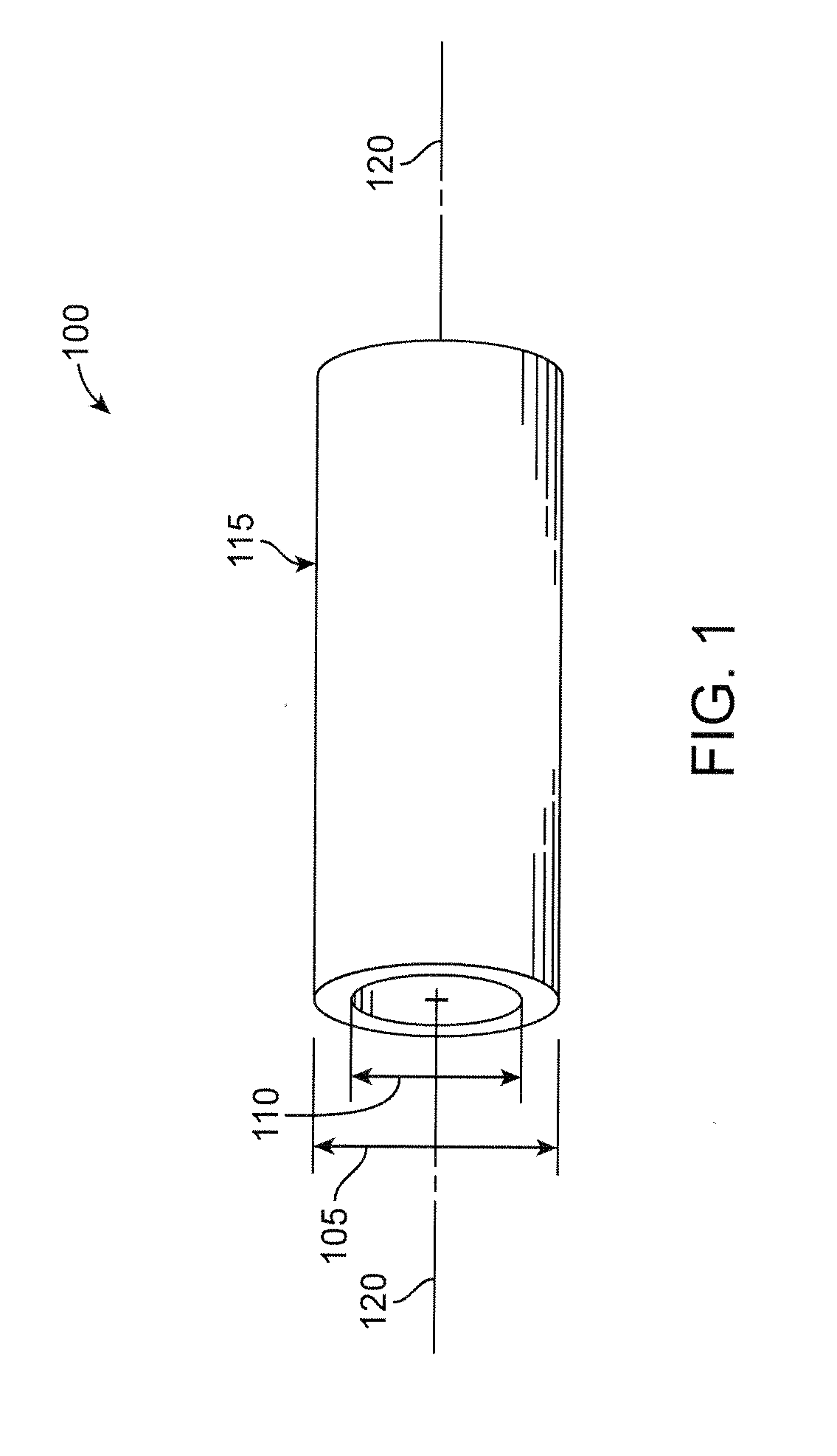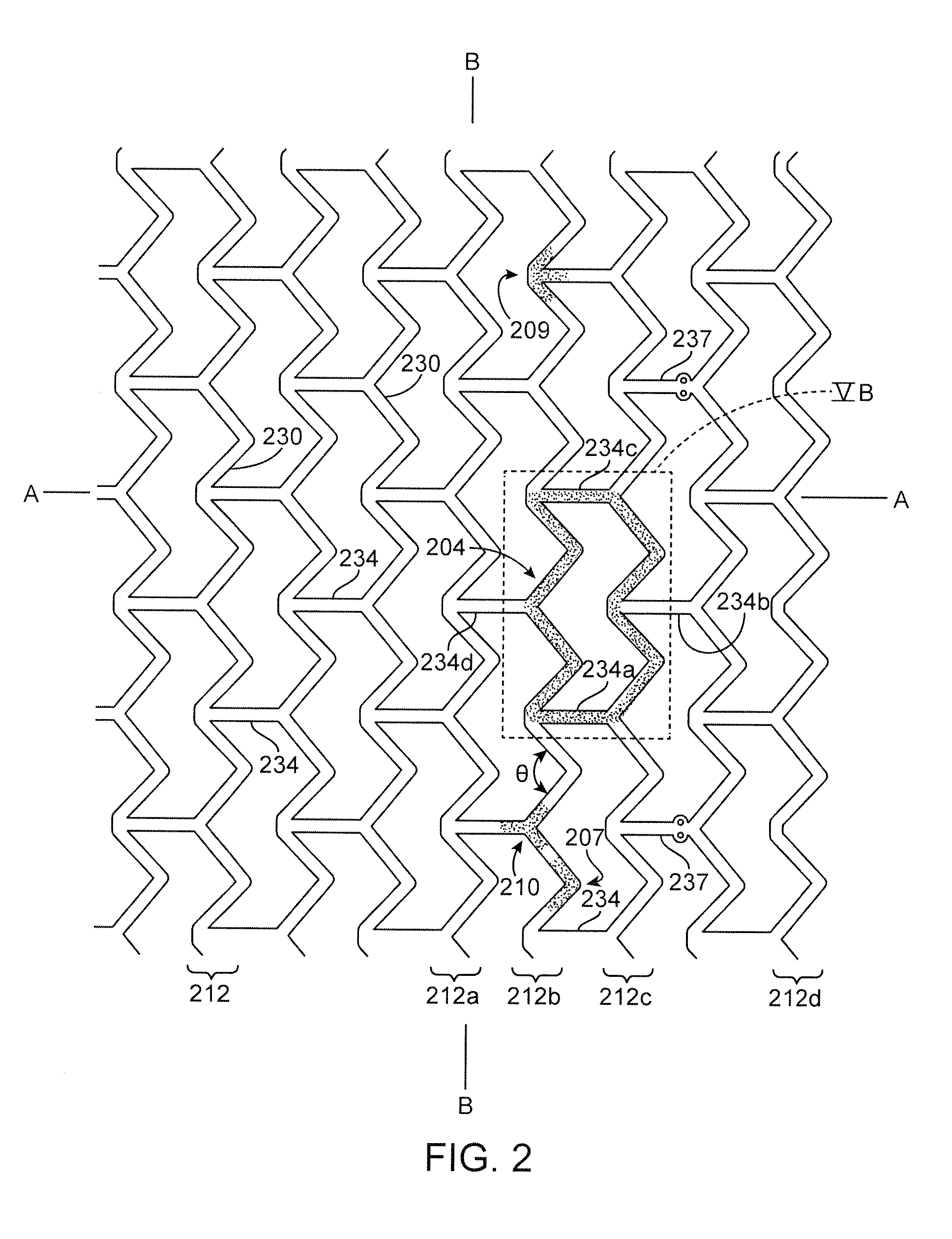Crush Recoverable Polymer Scaffolds Having a Low Crossing Profile
a polymer scaffold and low cross-section technology, applied in the field of drugeluting medical devices, can solve the problems of not being a suitable replacement, balloon expanded stent having sufficient radial strength and stiffness, and crimping the device, so as to reduce the bending moment of inertia (moi), reduce the applied load, and reduce the loading of the ring structure
- Summary
- Abstract
- Description
- Claims
- Application Information
AI Technical Summary
Benefits of technology
Problems solved by technology
Method used
Image
Examples
Embodiment Construction
[0087]The disclosure proceeds as follows. First, definitions of terms that may be used during the course of the subsequent disclosure are explained. Embodiments of processes for forming a deformed polymer tube from a precursor are provided. According to the disclosure, the crush recoverable and balloon expandable scaffold is cut from a tube (FIG. 1) formed through a process intended to enhance mechanical properties of the scaffold including fracture toughness. Discussion of the scaffold patterns according to several embodiments are discussed next. Examples of the scaffold patterns are provided. During this discussion, reference is made to aspects of a scaffold found to play an important role in the stiffness, strength, crimping and deployment of a polymer scaffold, as well as other properties as they relate to crush recoverability of a load-bearing polymer structure. Included herein are aspects of the scaffold that are contrary and, in some cases, surprising and unexpected, particul...
PUM
| Property | Measurement | Unit |
|---|---|---|
| inner radius | aaaaa | aaaaa |
| radial stiffness | aaaaa | aaaaa |
| radial stiffness | aaaaa | aaaaa |
Abstract
Description
Claims
Application Information
 Login to View More
Login to View More - R&D
- Intellectual Property
- Life Sciences
- Materials
- Tech Scout
- Unparalleled Data Quality
- Higher Quality Content
- 60% Fewer Hallucinations
Browse by: Latest US Patents, China's latest patents, Technical Efficacy Thesaurus, Application Domain, Technology Topic, Popular Technical Reports.
© 2025 PatSnap. All rights reserved.Legal|Privacy policy|Modern Slavery Act Transparency Statement|Sitemap|About US| Contact US: help@patsnap.com



